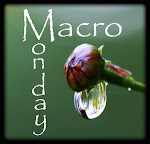



Tomatoes Infected with Late Blight
Luke F. LaBorde, Penn State Department of Food Science
Late blight is a common disease in tomatoes caused by the fungus Phytophthora infestans. The disease thrives in cool, moist conditions and can wipe out an entire tomato crop within just a few weeks of infestation.
Symptoms of Late Blight
Infected tomato plants initially develop water soaked lesions on the leaves and stems. Under cool and moist conditions, the fruits may become infected initially with firm, dark brown lesions that rapidly become enlarged, wrinkled, and somewhat sunken.
The rotted areas are usually located on the top of the fruit and may remain firm or become mushy.
Both green and ripe fruits can be infected. Green fruit that is picked early and ripened indoors may develop symptoms before it is ready to eat.
Canning recommendations
The USDA Complete Guide to Home Canning (1994 ed.) recommends that canners select only disease-free, preferably vine-ripened, firm tomatoes for canning. Fruit that shows severe symptoms of late blight, especially internalization of the mold into the tomato fruit, should not be used for canning.
Although the USDA Guide recommends using only vine-ripened fruit for canning, tomatoes that have been picked green and allowed to ripen indoors may be canned if they show no symptoms of late blight.
This does not mean that the fungus itself is harmful to eat.
This recommendation is based on the fact that fungus infected fruit may have a higher than normal pH that could make it unsafe for canning. This is true for other fungal infections of tomato as well.
Tomatoes that are damaged by frost are also not recommended for canning because the softened tissue may be quickly invaded by fungus. If the canner insists on recovering a frost damaged crop, the fruit should be picked the morning after the frost and processed that day.
Late Blight spores can overwinter where there is living plant material, like potatoes that were thrown aside or that were missed in harvest. From what I understand, late blight can produce types of spores that can overwinter in the soil on their own if there are two strains that are sexually reproducing in the area, but it seems the experts believe that is not the case in the Northeast this season.
But yes, there always seems to be plenty of inoculum out there, and if we get similar weather, you can be pretty sure we'll get another outbreak. The question then becomes how early it will hit. This year's was unusually early.
Remember as always to follow the USDA Guide's recommendations for acidification:
To ensure safe acidity in whole, crushed, or juiced tomatoes, add two tablespoons of bottled lemon juice or 1/2 teaspoon of citric acid per quart of tomatoes. For pints, use one tablespoon bottled lemon juice or 1/4 teaspoon citric acid. Acid can be added directly to the jars before filling with product. Add sugar to offset acid taste, if desired. Four tablespoons of a 5 percent acidity vinegar per quart may be used instead of lemon juice or citric acid.
(Thanks to Linda Wiles, Extension Educator, Horticulture, Monroe County for bringing this to our attention!)


























4 comments:
I am so sorry to hear this!!! I know how you feel.
It is infuriating. I have blossom rot on some of my plants, si I'm very sympathetic.
Oh, I'm sorry. This summer has been so weird here!
Sorry to hear that you have the blight!
Did you see, though, that everyone who entered the drawing on my blog for a Cobrahead weeder wins one. Please email me so I can get you the info on how to get yours!
Carol, May Dreams Gardens
Post a Comment